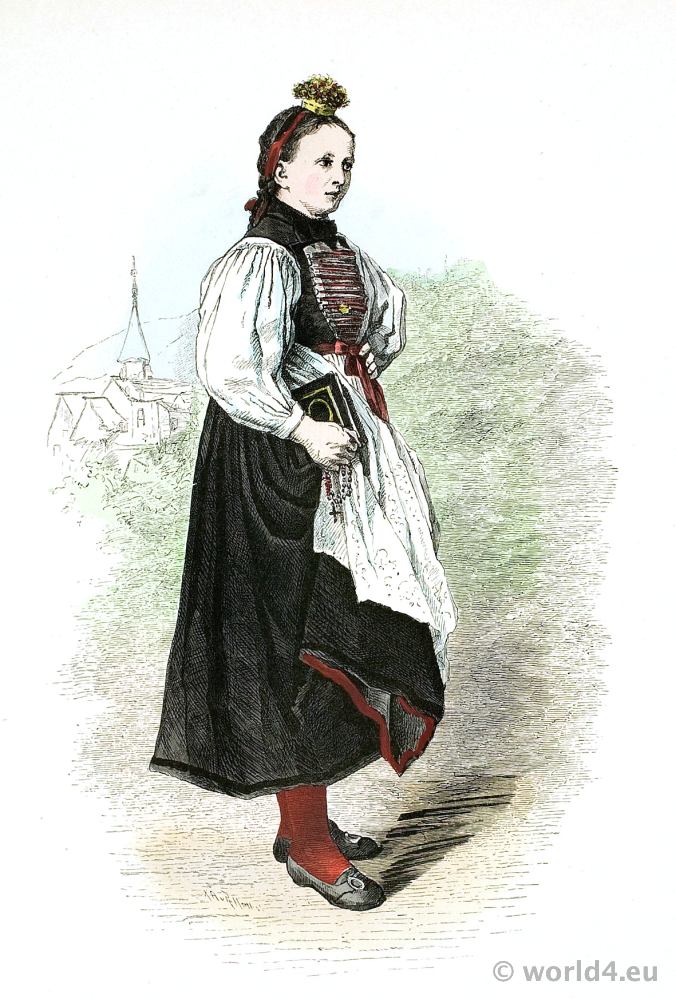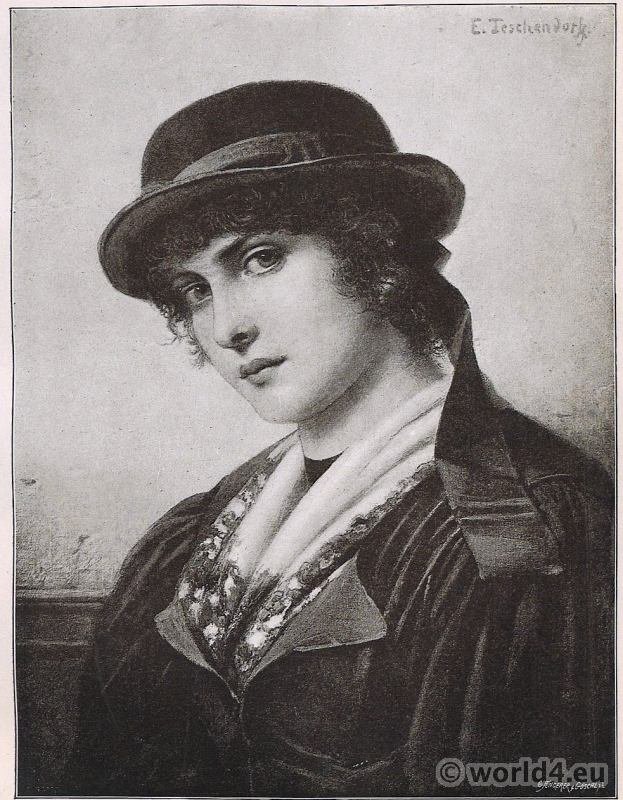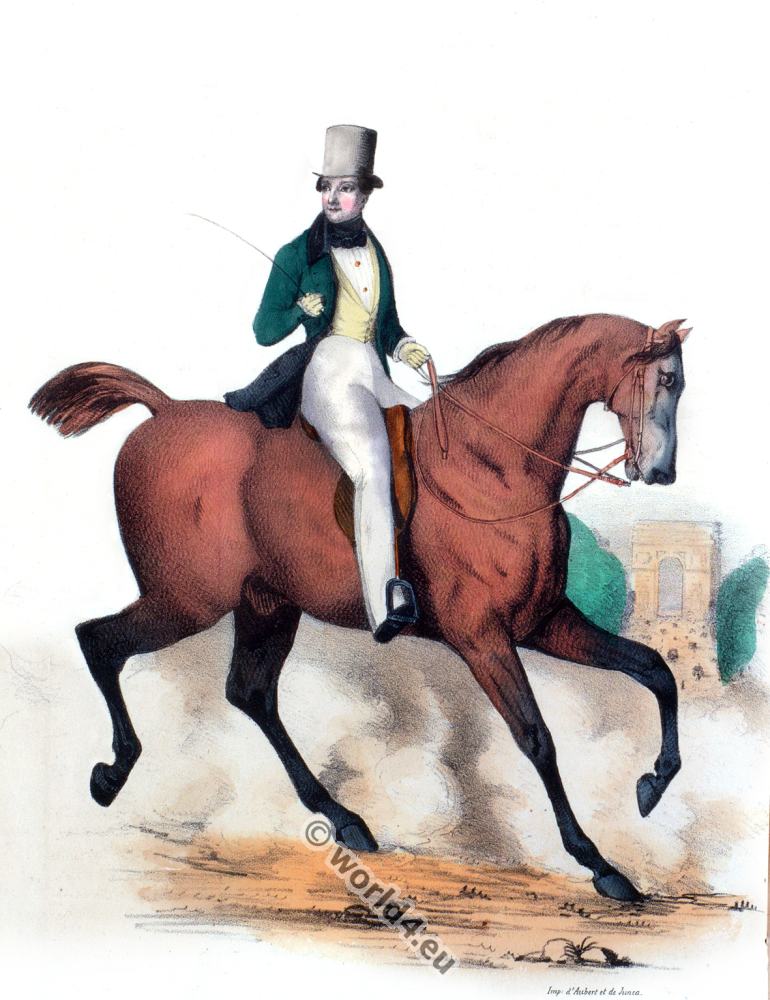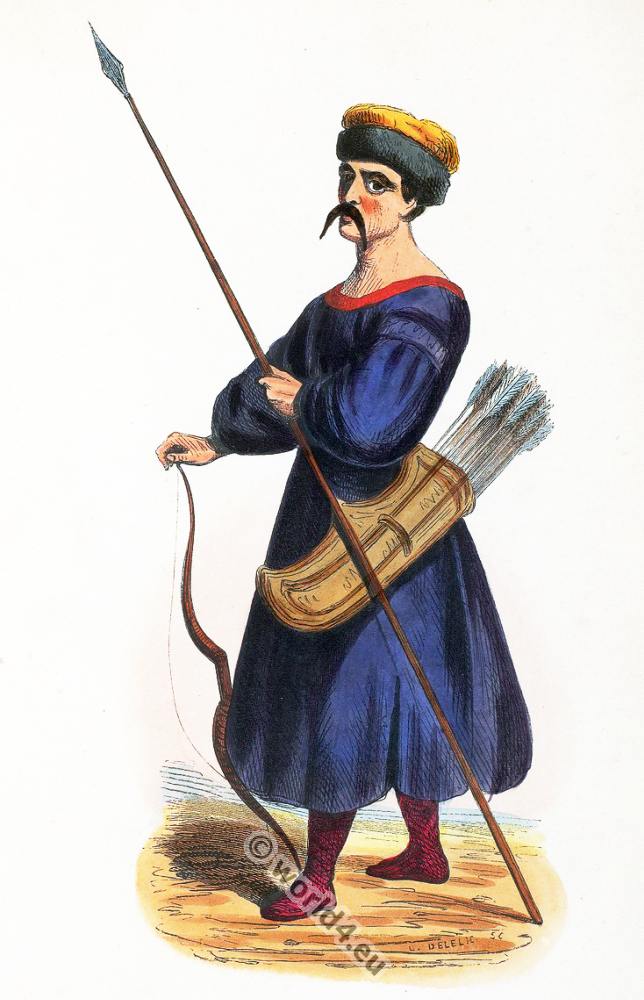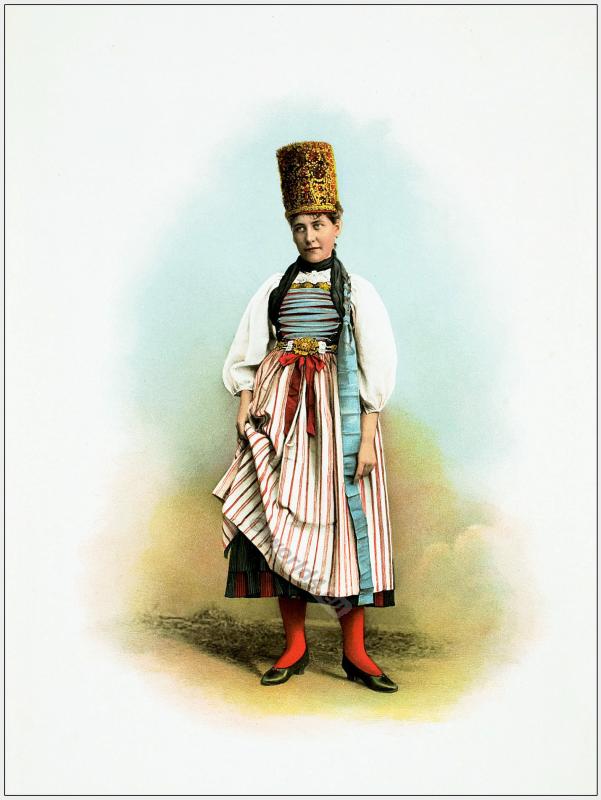Woman costume from Moravia 1837.
Woman costume from Moravia at the Showcase of the Austrian Ministry of Interior. 1st May to 2nd November 1873, Expo Park at Vienna.
Femme de Moravie. Vitrine du ministère de l’Intérieur.
Source: Jules Pelcoq: Souvenir de L’Exposition Universelle de Vienne. Dessins inédits de J. Pelcoq gravés par Morse. Paris 1873. Petit Journal pour rire. Aux bureaux du Journal amusant, des Modes Parisiennes et de la Toilette de Paris. Directeur. Eug. Philippon. Moine et Falconer, imp, r. Cardinal Lemoine, 51, Paris.
Associated to:
- Tyrolean national costumes 1835.
- Souvenir de L’Exposition Universelle de Vienne.
- Costumes of Japan and Java.
- Historical Asia costumes by Auguste Wahlen.
- Costumes of all countries by Alexandre Lacauchie 1850s.
- Historical and folk costumes by Franz Lipperheide.
- The costume of Turkey. Ottoman Empire 18th century.
- Traditional Dutch national costumes.
- Traditional French national costumes.
- The Switzerland national costumes of 17th – 19th century originals.
- Folk dresses from Norway, Dutch, Germany and Hungaria.
- Mexico by Carl Nebel 1836.
- Provincial Russia. Costume and Culture.
- Costume of the Russian empire by Edward Harding.
- Serbian national costumes by Vladimir Kirin.
- Historical European costumes by Auguste Wahlen.
- The Highlanders of Scotland, 1870.
- Costumes and scenery of Afghanistan.
- Views of Darjeeling: With typical native portraits and groups.
- Africa, the landscape and the people 1931.
- Historical costumes from Africa, America and Oceania.
- Traditional folk costumes of Italy and France in 1821.
- The Serbs in the Adriatic. Their types and costumes 1870-1878.


